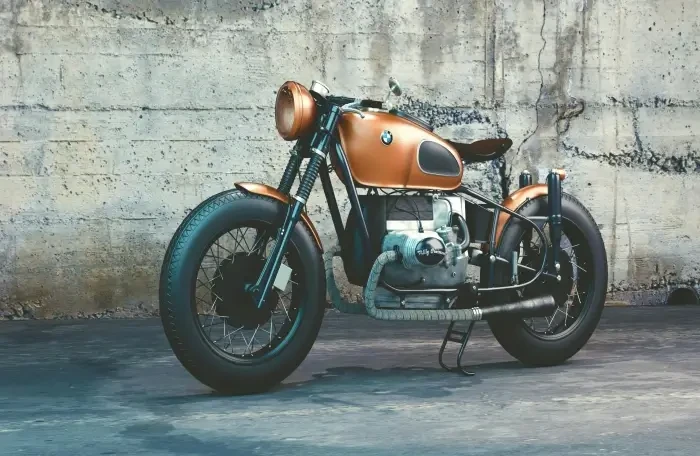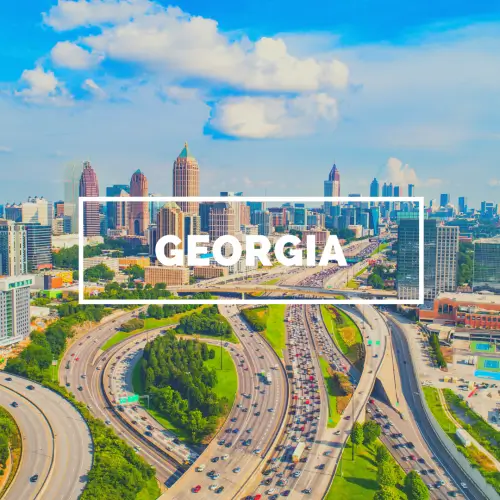2025 Expert Guide: The Best Tips for Finding Your Ideal Used Motorcycle

Lila Claybourne
Sep 19, 2024

Summary of Essential Tips for Buying a Used Motorcycle:
Pros and Cons of Buying a Used Motorcycle
Researching the Right Motorcycle Model
Setting a Budget and Assessing Market Value
Essential Pre-Purchase Checks
Key Questions to Ask the Seller
Evaluating the Motorcycle’s History
Detailed Quality Inspection Checklist
Customized Checklists for Different Motorcycle Types
Importance of a Cold Start Inspection
Taking a Test Ride: What to Look For
Evaluating Aftermarket Parts and Modifications
Tips for Negotiating the Price
How to Finalize the Purchase
Safely Transporting Your Motorcycle
Buyer Beware: Common Scams to Avoid
FAQs on Buying a Used Motorcycle
Exploring Motorcycle Culture and Top Riding Destinations
In 2025, the used motorcycle market is booming, with a 20% increase in sales reported over the past year. Many riders choose used bikes to save money or find a classic model. But buying used comes with challenges. This guide covers essential tips, from understanding the pros and cons to detailed inspection steps. Learn more about the benefits of owning a motorcycle.
1. Pros and Cons of Buying a Used Motorcycle
Pros:
Cost Savings: Used motorcycles cost less than new ones, making it easier to find a quality bike at a lower price.
Reduced Depreciation: New bikes depreciate quickly, while used motorcycles hold their value better.
Variety: The used market offers a wide range of models, including discontinued and classic bikes.
Cons:
Potential Mechanical Issues: Used bikes may have hidden mechanical problems due to wear and tear.
Shorter Lifespan: A used motorcycle has a shorter lifespan compared to a new one, especially if not well-maintained.
Limited Warranties: Most used bikes come without a warranty, leaving you responsible for repairs.
Why It Matters: Understanding the pros and cons helps you make an informed decision and prepares you for potential challenges.
2. Researching the Right Motorcycle Model
Choose a model that fits your needs:
Bike Type: Decide if you need a cruiser, sportbike, touring bike, or dirt bike.
Reliability: Look for models known for durability. Online reviews and forums can provide insights.
Parts Availability: Ensure that replacement parts are easy to find and affordable.
Why It Matters: Proper research ensures you select a bike that meets your needs and reduces future maintenance headaches.
3. Setting a Budget and Assessing Market Value
Determine how much you can spend. Include insurance, registration, and potential repairs. Use resources like Kelley Blue Book to check the market value of the motorcycle.
Price Negotiation Tactics:
Use Issues as Leverage: Point out any problems found during the inspection to negotiate a lower price.
Be Prepared to Walk Away: If the price isn't right, don't feel pressured to buy.
Why It Matters: Knowing the fair market value and setting a budget helps you avoid overpaying.
4. Essential Pre-Purchase Checks
Before making an offer, do these checks:
VIN Check: Use the VIN to get a history report. Services like Carfax or CycleVIN can reveal past accidents and title status.
Service Records: Ask for maintenance records to see if the bike was properly maintained.
Title Status: Ensure the title is clear and not marked as salvaged.
Why It Matters: These checks help you avoid buying a bike with hidden issues or legal problems.
5. Key Questions to Ask the Seller
When speaking with the seller, ask:
What is the current mileage? Higher mileage can indicate more wear and tear.
Has the motorcycle been in any crashes? Accidents can affect safety and value.
Does it have aftermarket parts or modifications? Mods can impact performance and maintenance.
Why are you selling the motorcycle? This can reveal potential issues.
Why It Matters: Asking the right questions helps you gather crucial information for an informed decision.
6. Evaluating the Motorcycle’s History
Ask the seller for:
Previous Owners: Multiple owners may signal potential issues.
Usage: How was the bike used? Commuting, long trips, or racing affect wear differently.
Maintenance: Regular maintenance signals that the bike was well cared for.
Why It Matters: Knowing the bike's history helps gauge its condition and potential reliability.
7. Detailed Quality Inspection Checklist
Inspect the motorcycle thoroughly. Focus on these key areas:
Brakes:
Brake Pads and Discs: Check for wear and damage. Smooth stopping is crucial for safety.
Brake Fluid: Ensure the fluid is clear and topped up.
Electrical System:
Lights and Signals: Test all lights, including brake lights and indicators.
Console Displays: Ensure all dashboard indicators work properly.
Tires:
Tread Depth: Check for uneven wear and adequate tread depth.
Pressure: Ensure proper tire pressure.
Frame:
Rust and Damage: Look for signs of rust, dents, or cracks. These can indicate previous accidents.
Exhaust:
Check for Rust and Leaks: Look for corrosion and ensure the pipes are mounted securely.
Why It Matters: A thorough inspection helps you identify potential issues that may lead to costly repairs.
8. Customized Checklists for Different Motorcycle Types
Cruisers:
Aftermarket Parts: Check the quality of mods, like exhaust systems or handlebars.
Comfort Features: Look for comfortable seats and ergonomics for long rides.
Sportbikes:
Signs of Hard Riding: Inspect for track use signs like worn footpegs or scuffed bodywork.
Tire Wear: Ensure tires are not overly worn from aggressive riding.
Dirt Bikes:
Engine Wear: Look for excessive wear on the engine, a sign of hard off-road use.
Skid Plate: Ensure the skid plate is intact, protecting the bike from rocks and debris.
Why It Matters: Different motorcycles have unique inspection points. Tailoring your checklist ensures a thorough evaluation.
9. Importance of a Cold Start Inspection
A cold start can reveal hidden mechanical problems. Ask the seller not to warm up the bike before your visit.
Observe the Start: Pay attention to how the engine starts from a cold state. Listen for unusual noises or excessive smoke.
Idle Behavior: The bike should idle smoothly without stalling.
Why It Matters: A cold start can uncover issues like carburetor problems or starter issues that may not appear when the engine is warm.
10. Taking a Test Ride: What to Look For
During the test ride, evaluate:
Engine Response: Check how the engine responds to throttle input. It should accelerate smoothly.
Braking Efficiency: Test the brakes for immediate and smooth stopping.
Handling: Assess how the bike handles in different conditions, including corners and straightaways.
Comfort: Ensure the bike's style, weight, and ergonomics fit your needs.
Why It Matters: A test ride gives you firsthand experience of the bike's performance and handling.
11. Evaluating Aftermarket Parts and Modifications
Aftermarket parts can impact a motorcycle's performance:
Performance Mods: Parts like exhaust systems can enhance performance but may require frequent maintenance.
Safety: Ensure mods do not compromise safety. Custom handlebars or seats should not affect handling.
Impact on Value: Mods can either increase or decrease the bike's value, depending on their quality.
Why It Matters: Understanding modifications helps you gauge the bike's suitability and potential maintenance needs.
12. Tips for Negotiating the Price
Use your findings to negotiate:
Highlight Issues: Use identified problems as leverage for a lower price.
Know the Market Value: Research similar models to understand the market price.
Be Ready to Walk Away: Don't settle if the deal doesn't meet your expectations.
Why It Matters: Smart negotiation can save you money and ensure a fair deal.
13. How to Finalize the Purchase
Once you agree on a price:
Complete the Paperwork: Ensure the title is properly transferred. Get a bill of sale.
Secure Payment: Use a safe payment method and get a receipt.
Insurance and Registration: Insure and register the bike promptly.
Why It Matters: Proper documentation protects you legally and ensures smooth ownership transfer.
14. Safely Transporting Your Motorcycle
After finalizing the purchase, transport the bike safely:
Hire a Professional: Consider using a professional motorcycle transport service like AmeriFreight.
Secure the Bike: Use straps and wheel chocks to secure the bike if you're transporting it in a truck.
Cover the Bike: Protect the bike from debris during transport by covering it.
Why It Matters: Proper transportation ensures your motorcycle arrives safely without damage.
15. Buyer Beware: Common Scams to Avoid
Protect yourself from fraud:
Too Good to Be True: Be wary of deals that seem too good. Scammers often lure buyers with low prices.
No Paperwork: Avoid sellers who can't provide a title or service records.
Rushed Sales: If the seller is in a hurry to complete the sale, investigate further.
Why It Matters: Awareness of common scams helps you avoid costly mistakes.
16. Exploring Motorcycle Culture and Top Riding Destinations
Motorcycling isn't just about the ride; it's a lifestyle. Here are some top destinations and events to inspire your journey:
Top Motorcycle Rides: Routes like the Pacific Coast Highway and Blue Ridge Parkway offer stunning views and challenging twists.
Major Motorcycle Rallies: Events like Sturgis Motorcycle Rally and Daytona Bike Week attract riders from around the world.
Motorcycle Clubs and Communities: Joining a motorcycle club can enhance your riding experience with group rides and social events.
Why It Matters: Knowing where to ride and connect with other enthusiasts enhances your overall motorcycle ownership experience.
Frequently Asked Questions About Buying a Used Motorcycle
Q1: How many miles is too many on a used motorcycle?
A: It depends on the model and maintenance history. Motorcycles with over 20,000-30,000 miles may need more maintenance, but well-maintained bikes can run smoothly beyond 50,000 miles.
Q2: What documents should I get from the seller?
A: Ensure you receive the title, a bill of sale, and service records. Confirm the VIN on the title matches the bike’s VIN.
Q3: Can I finance a used motorcycle?
A: Yes, many lenders offer financing for used bikes. Compare rates to find the best deal.
Q4: Should I buy from a private seller or a dealer?
A: Private sellers may offer lower prices, while dealers can provide warranties and pre-sale inspections. Choose based on your comfort level and the specific deal.
Q5: How can I verify the motorcycle's history?
A: Use the VIN to check the motorcycle's history report. This can reveal accidents, ownership history, and title status.
Ready to secure your dream motorcycle? Ensure a safe and hassle-free transport with AmeriFreight. Get an instant quote now.
Related Posts
















